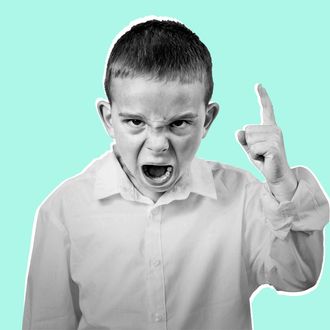
It’s easy to immediately recognize when someone is angry, and the basic features of an angry face appear to be the same just about everywhere. Why? Some researchers at the University of California, Santa Barbara, and Griffith University in Australia are piecing together part of the puzzle, and they think a big purpose of the angry face is, in short, to make sure someone else understands that whatever you’re mad about needs to be taken seriously.
By messing around with computer morphing of faces, they found some cool stuff:
Starting from the hypothesis that anger is a bargaining emotion, the researchers reasoned that the first step is communicating to the other party that the anger-triggering event is not acceptable, and the conflict will not end until an implicit agreement is reached. This, they say, is why the emotion of anger has a facial expression associated with it. “But the anger face not only signals the onset of a conflict,” said Sell. “Any distinctive facial display could do that. We hypothesized that the anger face evolved its specific form because it delivers something more for the expresser: Each element is designed to help intimidate others by making the angry individual appear more capable of delivering harm if not appeased.”
…
Using computer-generated faces, the researchers demonstrated that each of the individual components of the anger face made those computer-generated people appear physically stronger. For example, the most common feature of the anger face is the lowered brow. Researchers took a computerized image of an average human face and then digitally morphed it in two ways: One photo showed a lowered brow, and the other a raised brow. “With just this one difference, neither face appeared ‘angry,’ ” said Sell. “But when these two faces were shown to subjects, they reported the lowered brow face as looking like it belonged to a physically stronger man.”
The experiment was repeated one-by-one with each of the other major components of the classic anger face — raised cheekbones (as in a snarl), lips thinned and pushed out, the mouth raised (as in defiance), the nose flared and the chin pushed out and up. As predicted, the presence by itself of any one of these muscle contractions led observers to judge that the person making the face was physically stronger.
It’s kind of cool that evolution figured out a totally automatic way to make us look threatening, which certainly came in handy back in the day when it came to dividing up scarce food reserves fairly, or today, when your jerk friend steals the last French fry.




